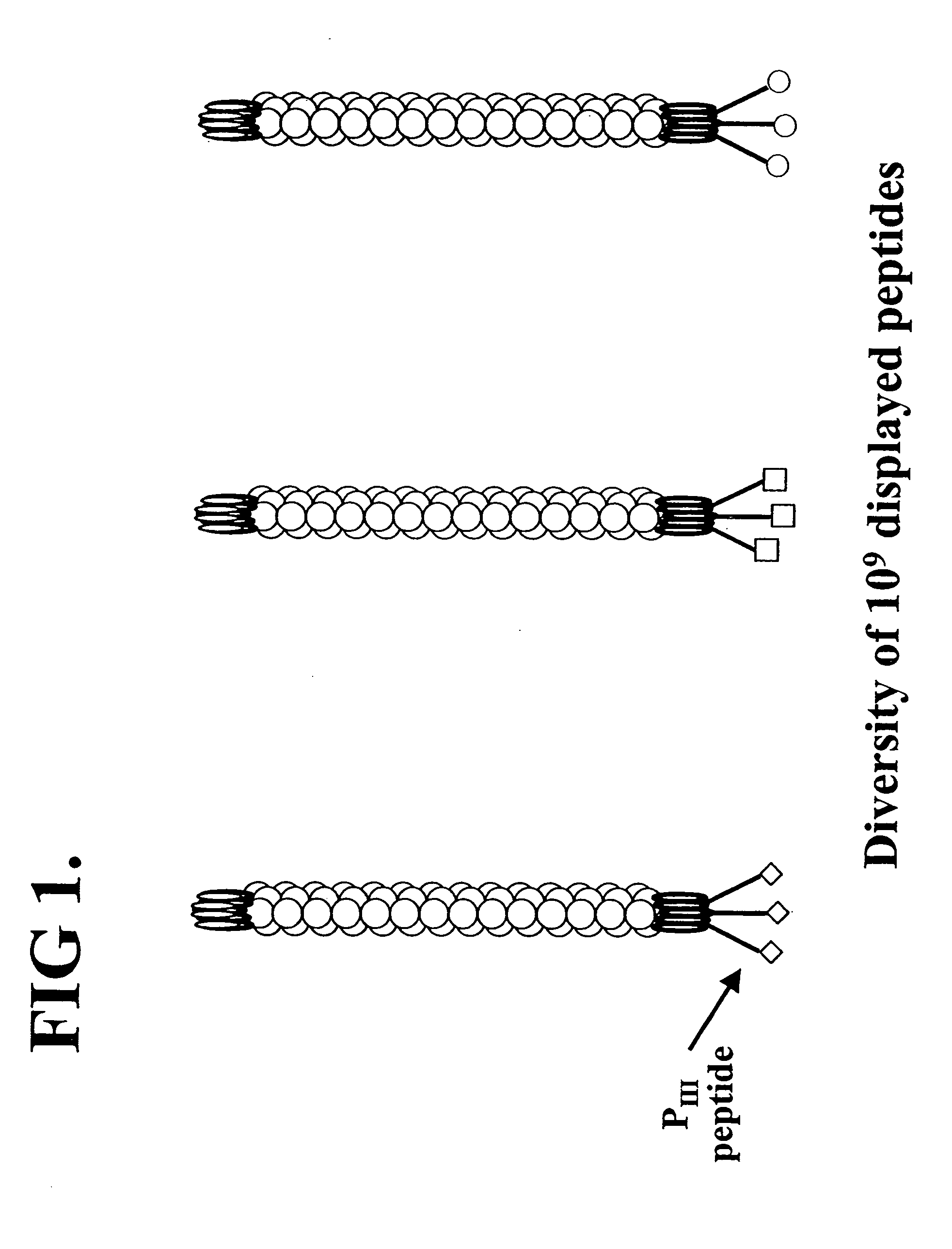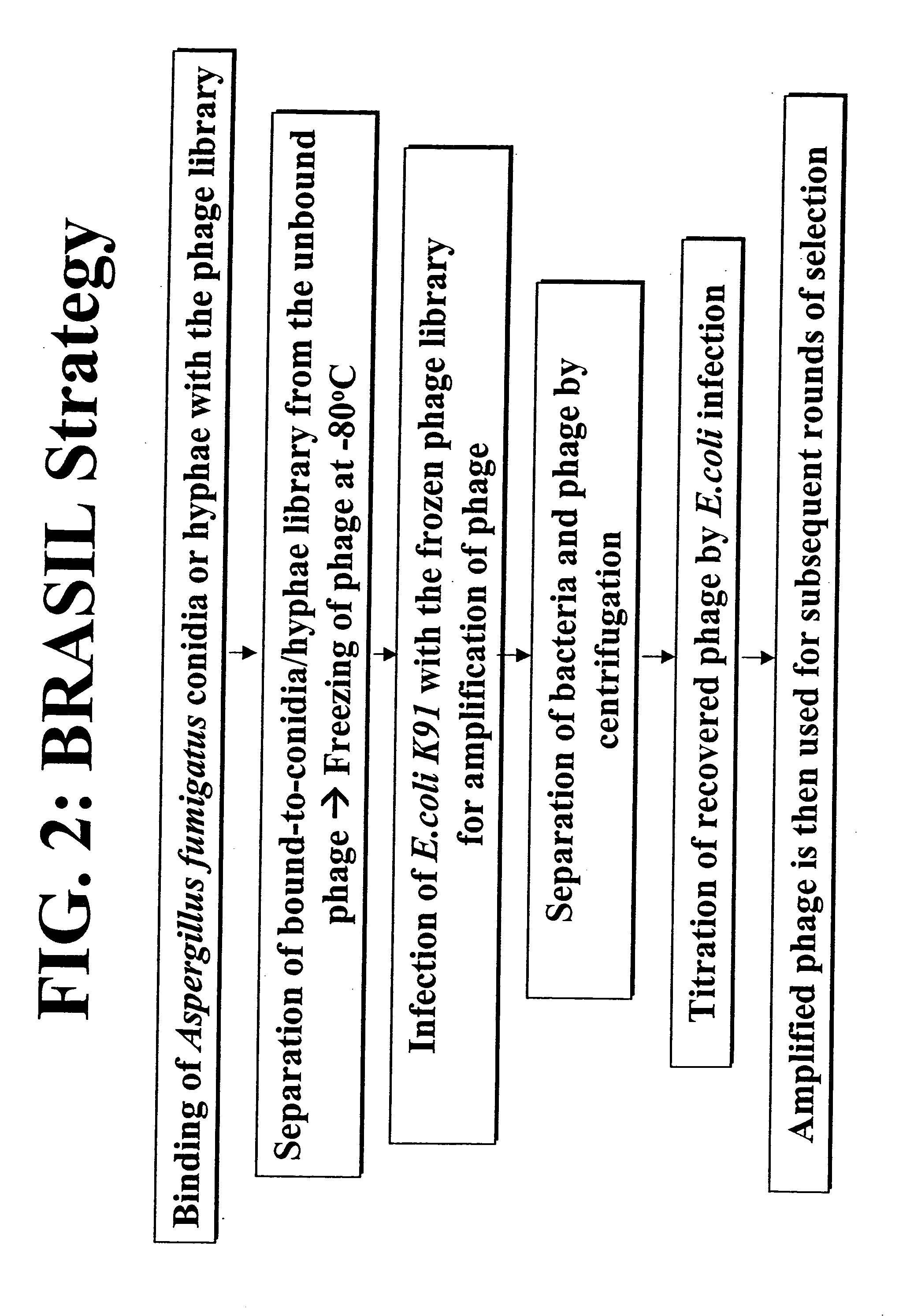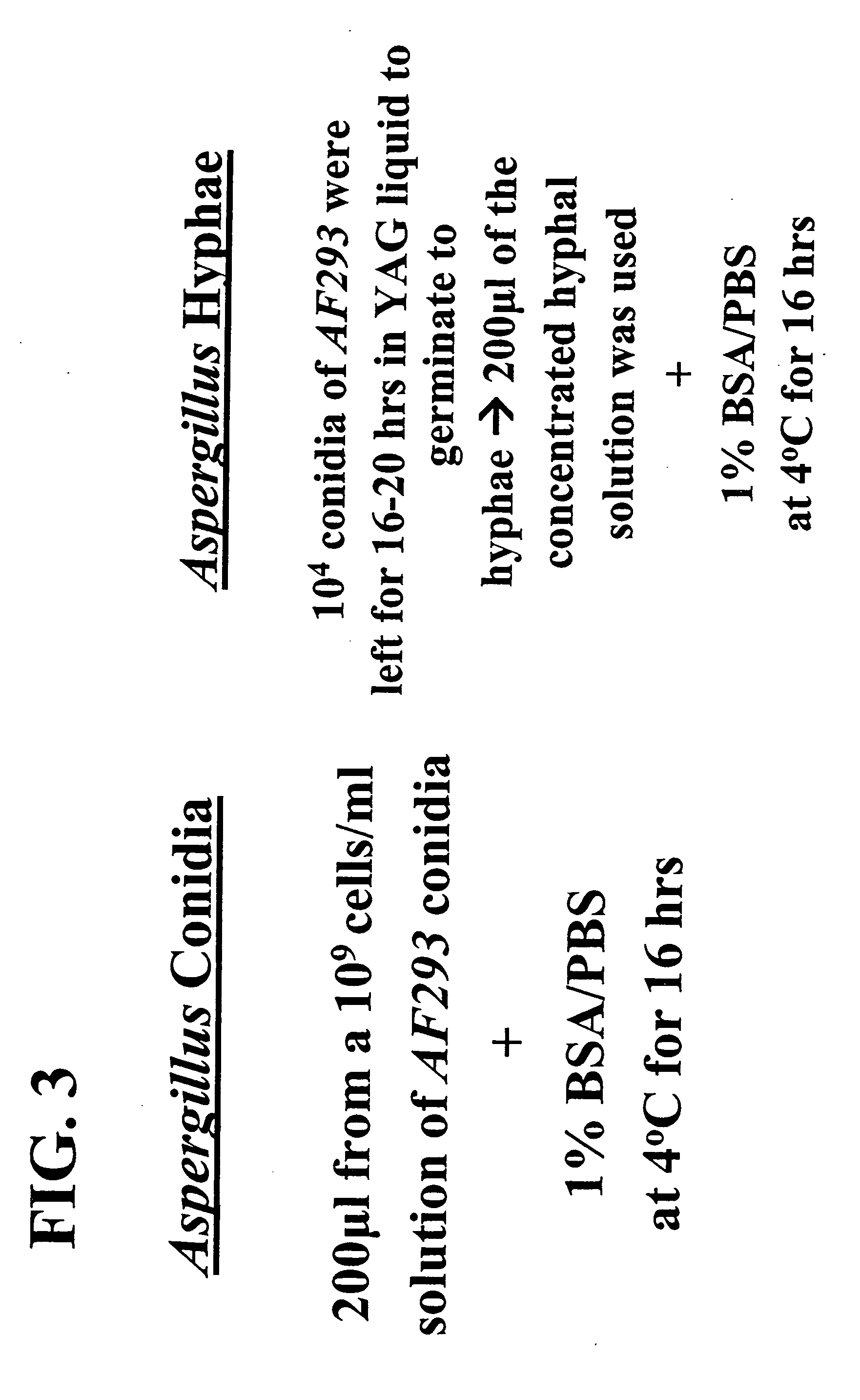Biopanning as an approach to study the pathogenesis of and produce novel treatment modalities for invasive Aspergillosis
- Summary
- Abstract
- Description
- Claims
- Application Information
AI Technical Summary
Benefits of technology
Problems solved by technology
Method used
Image
Examples
example 1
Library Screening of Aspergillus fumigatus
[0140] To identify potential host ligands that bind on the surface of A. fumigatus conidia and hyphae, a phage display library (CX7C) for A. fumigatus conidia and hyphae binding ligands using BRASIL is screened. The Aspergillus fumigatus clinical isolate AF293 (currently being used in the Aspergillus sequencing project, provided kindly by Dr. D. Denning, Manchester, UK.) is plated on YAG plates at 37° C. for 3 days and conidia are collected. Conidia (suspensions of 104 conidia / ml) are incubated at 37° C. for 16-20 hours in liquid YAG medium to allow for germination to hyphae. Conidia or hyphae, collected as described earlier, were then incubated with 109 transducing units (TU) of CX7C phage display library (Arap et al., 2002). A phage-conidia / hyphae suspension in an upper aqueous phase is centrifuged through a non-miscible organic phase with an intermediate specific density. Upon optimized centrifugation conditions conidia or hyphae entered...
example 2
BRASIL Method for CAS-Exposed Aspergillus Conidia and Hyphae
[0145] CAS is a novel antifungal agent that irreversibly inhibits the enzyme 1,3-β-D-glucan synthase, preventing the formation of glucan polymers and disrupting the integrity of the fungal cell wall (Bowman et al., 2002, FIG. 8A). This glucan synthase complex is located in the apical tips of Aspergillus hyphae (Beauvais et al., 2001, FIG. 8B, right panel).
[0146] Pharmacokinetic studies in humans have shown that the typical CAS plasma concentrations that are achieved in humans after the conventional intravenous CAS dosing (50-70 mg / day) exceed 1 μg / ml. For that reason, AF293 (Aspergillus) will be plated on YAG plates containing 2 μg / ml of CAS and conidia will be collected after 3 days. Conidia (suspensions of 104 conidia / ml) will then be incubated at 37° C. for 16-20 h in liquid YAG medium containing 2 μg / ml of CAS to allow for germination to hyphae. Subsequently, CAS-exposed conidia or hyphae will be co-incubated with 109...
example 3
In vivo Phage Display for Identification of Peptides that Home in Mouse Lung Tissues in the Setting of Acute Invasive Pulmonary Aspergillosis
[0147] Murine model of acute IA: During the last 3 years a murine model of acute invasive pulmonary aspergillosis that mimics the pathogenesis of the infection has been established and it has been extensively used to test the efficacy of several antifungal agents against Aspergillus species (Lewis et al., 2002, Liu et al., 2003, Lewis and Kontoyiannis, 2001). FIG. 11 outlines the procedures used for immunosuppression and infection of the mice (via inhalation) with Aspergillus conidia.
[0148] After inoculation with Aspergillus conidia mice develop signs and symptoms of pneumonia (approximately 48-72 h after inoculation) that progresses to respiratory failure around 96-120 h after inoculation. The moribund animals are best identified by the presence of any of the following 4 criteria: 1. rapid breathing rate accompanied by intermittent slow, lab...
PUM
| Property | Measurement | Unit |
|---|---|---|
| Length | aaaaa | aaaaa |
| Size | aaaaa | aaaaa |
Abstract
Description
Claims
Application Information
 Login to View More
Login to View More - R&D
- Intellectual Property
- Life Sciences
- Materials
- Tech Scout
- Unparalleled Data Quality
- Higher Quality Content
- 60% Fewer Hallucinations
Browse by: Latest US Patents, China's latest patents, Technical Efficacy Thesaurus, Application Domain, Technology Topic, Popular Technical Reports.
© 2025 PatSnap. All rights reserved.Legal|Privacy policy|Modern Slavery Act Transparency Statement|Sitemap|About US| Contact US: help@patsnap.com



